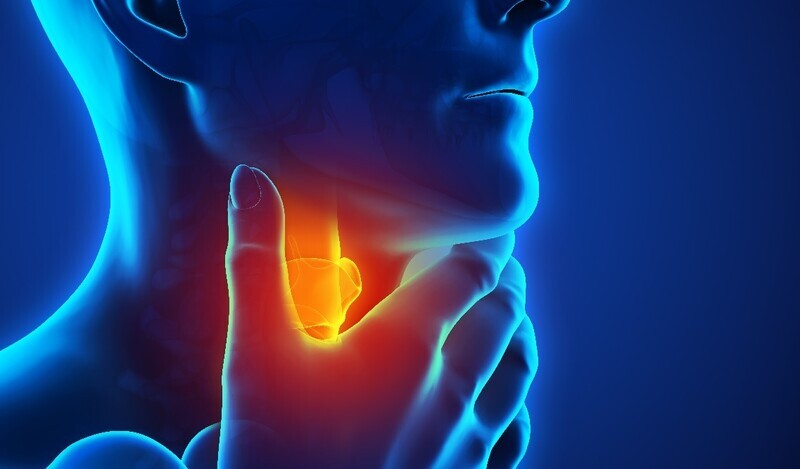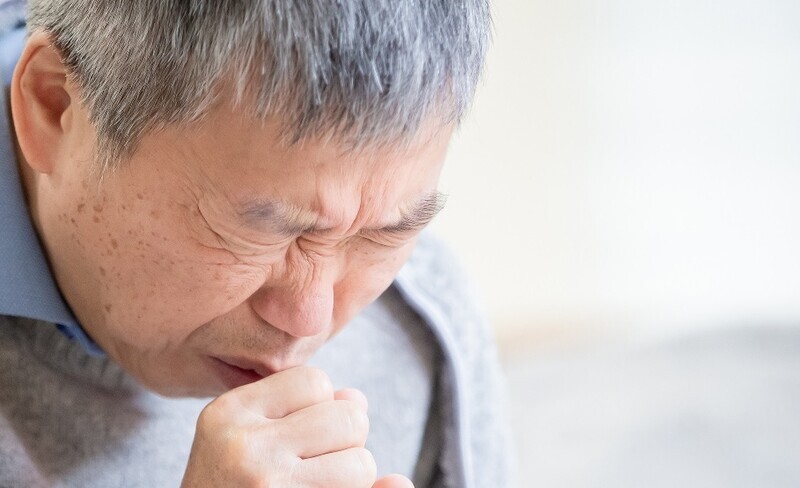hankyoreh
Links to other country sites 다른 나라 사이트 링크
Caught Omicron? Here’s what you can do to manage the pain

The Omicron wave of the COVID-19 virus has represented a shift in the dominant disease control paradigm from that of “zero COVID” to that of “living with COVID.” China’s zero-COVID regime operates under the assumption that stringent disease control measures can curb the spread of the virus. In contrast, the “living with COVID” paradigm, which was spearheaded by Japan when it pushed ahead with the Tokyo Olympics despite the Delta wave last year, acknowledges the limits of disease control.
As Omicron became the dominant strain of the COVID-19 virus across the world this year, most countries except China decided to adopt a system of living with COVID. In contrast, due to the shortcomings of Sinovac, the leading COVID vaccine in China, and deficient medical infrastructure, China is not in the position to give up its zero-COVID regime.
With the emergence of Omicron, the disease control paradigm in South Korea also experienced a shift. The goal now is the “safe spread” of COVID-19 that minimizes the virus’s fatality rate in the country. The safety net for such a spread can be created by managing medical infrastructure and achieving high vaccination rates among the public.
Once the safety net has been secured, it’s best if Omicron spreads through the population as quickly as possible. That’s because, for best results, the spread must take place while RNA vaccines have activated cell-mediated immunity in the vaccinated. Importantly, because memory cell reactivation takes longer in seniors, who make up a big portion of COVID-19 fatalities, it’s best if the spread takes place as soon as booster shots have been administered to the population in high numbers.
Because antibodies from existing vaccines don’t work against Omicron, herd immunity, which can end the spread of the strain in South Korea, can only be achieved through infection. The cumulative total of COVID-19 cases in South Korea accounts for more than 25% of the country’s population, and actual figures are estimated to be two to three times higher. In other words, South Korea may have already achieved 40% to 50% herd immunity against Omicron, and once the figure reaches 70%, the spread of Omicron in the country will end.
Although the idea of a “safe spread” may work from a disease control perspective, there’s no need for individuals to intentionally get infected with COVID to be among the 70%. But still, since avoiding infection based on individual effort may be difficult in a “living with COVID” paradigm, let’s learn more about the infection process of COVID-19 and how you can minimize the negative effects of the virus once you’re infected.

Omicron makes a big fuss as it penetrates mucous membranes of the throat area. On the other hand, Delta attacks silently, moving from mucous membranes to the lungs. While Omicron moves through mucous membranes vertically, Delta does so horizontally. As a result, Omicron mainly results in a sore throat, while Delta can lead to pneumonia in severe cases.
While Delta infections are mild at the outset, they have a higher chance of developing into critical cases. In contrast, those infected with Omicron get knocked out at the outset, but that tends to be the end of the disease.
Symptoms are caused by immune responses, not the virus itself. In particular, innate immunity prompts severe inflammatory responses.
Omicron is considered mild because it has a low chance of leading to death, not because it doesn’t hurt. The strain leaves the throat riddled with severe inflammation. Typical symptoms of Omicron include an incredibly sore throat, body aches, a fever and chills.

Let’s move on to what you can do once you’ve been infected with Omicron. The important thing is to listen to the signals your body sends at the early stage of your infection.
One of the first symptoms you may feel is an itchy throat. Omicron infections make themselves known from early on, so neural stimulation is common during that stage.
If you suspect you’ve been in contact with a positive case and your throat feels itchy, mouthwash can help. Mouthwash solutions can lower your infectivity, but it can also effectively reduce virus particles in your mucous. Because your innate immunity has already started working by this point, reducing the number of virus particles can help shorten the progress of your infection.
Using mouthwash can also effectively relieve pain associated with a sore throat later on, as it reduces the number of germs irritating your mucous membranes that have been compromised by the virus. Still, overusing mouthwash when you don’t have symptoms is a no-go. That’s because normal bacterial flora in the oral cavity is part of our body’s immune defense system.
A dry cough is another common symptom along with a sore throat. Though dry coughs can be painful, it also means that secondary bacterial infections haven’t taken place.
With a secondary infection, your body will produce yellow phlegm. Hydration is more important at this point than using humidifiers. Drinking too much water all at once will only make you want to go to the bathroom frequently, so drink small amounts of water in short intervals. Innate immunity burns up a lot of calories, so drinking beverages with high sugar content is also a good idea.
Some people take cough suppressants to deal with their symptoms, but it’s not recommended unless coughing is causing too much distress. That’s because coughing is a purifying process through which the body tries to eliminate the virus.
Another symptom that functions as the body’s purifying process is sneezing. When you sneeze, try not to hold yourself back — let it all out.
But do keep in mind that coughing and sneezing spray contagious excretions that can infect others around you. Hence, try to sneeze with a mask on — it would be even better if you covered your mouth and nose with a thick towel. This is especially important to note if you’re isolating in a household where other family members are present.
A runny nose is a common symptom in children. Snot is our mucous membranes’ natural reaction meant to push out harmful, irritating substances from our noses. Snot during infection contains a large number of virus particles. Therefore, you should blow your nose to draw the snot out of your system.
Children have the bad habit of swallowing their snot. This is undesirable, as it spreads the virus in the upper airway into the lungs’ nooks and crannies. Because children prefer to swallow their snot instead of blowing it, you should make sure to teach your children how to properly blow their nose.
Since using tissue to blow your nose repeatedly can cause your nose to become sore, try teaching your kids how to blow their nose with running water. Though it may seem trivial, it’s an important habit that children living in the age of a pandemic should develop.
Lastly, massaging or stretching your neck area can help with your symptoms. Try to move around even if your body aches, as that’s good for your immunity. The lymphatic system, which circulates immune cells, is separate from the vascular system. Plus, what powers the lymphatic system’s circulation is muscle movement. Therefore, proper hydration and movement of the neck can help lymph circulation in the throat area.
At the early stage of infection, small habits like these can shorten the overall progression of the disease. But the more an infection has progressed, the less such individual actions can positively affect the overall illness. Hence, when you’re infected with Omicron, the most important thing you can do is to go to a doctor and receive appropriate treatment and medicine.

The most common long-term effects of Omicron are dry coughs, fatigue, and an abnormal sense of taste.
As explained above, a dry cough results when your mucous membrane stops working properly. Especially, when goblet cells, which secrete mucus, are damaged by inflammation, the mucous layer thins. As a result, normal bacteria irritate the throat and cause coughing more frequently. Until your mucous membrane completely recovers, slight inflammations caused by normal bacteria may persist. Chronic inflammation can make you feel tired easily.
An abnormal sense of taste is a result of olfactory nerves not working properly due to inflammation. Though talk of olfactory nerves in relation to an abnormal sense of taste may seem curious, our ability to taste is a collaborative result of our sense of taste and our sense of smell. If you hold your nose and take a bite out of an onion, you won’t be able to taste anything, which points to how important your sense of smell is in your ability to taste. Therefore, when inflammation deteriorates your olfactory function, your sense of taste changes.
These long-term effects will disappear once your mucous membrane has been regenerated and you’ve recovered from inflammatory damages left behind by the virus. Though it varies depending on the scope and severity of inflammations, recovery takes about a month on average. These symptoms are a sign your body is recovering from inflammations, not a sign of the virus remaining in your body, so they shouldn’t be cause for concern.
By Joo Chul-hyun, professor of microbiology at the University of Ulsan
Please direct questions or comments to [english@hani.co.kr]

Editorial・opinion
![[Column] Season 2 of special prosecutor probe may be coming to Korea soon [Column] Season 2 of special prosecutor probe may be coming to Korea soon](https://flexible.img.hani.co.kr/flexible/normal/500/300/imgdb/original/2024/0426/3317141030699447.jpg) [Column] Season 2 of special prosecutor probe may be coming to Korea soon
[Column] Season 2 of special prosecutor probe may be coming to Korea soon![[Column] Park Geun-hye déjà vu in Yoon Suk-yeol [Column] Park Geun-hye déjà vu in Yoon Suk-yeol](https://flexible.img.hani.co.kr/flexible/normal/500/300/imgdb/original/2024/0424/651713945113788.jpg) [Column] Park Geun-hye déjà vu in Yoon Suk-yeol
[Column] Park Geun-hye déjà vu in Yoon Suk-yeol- [Editorial] New weight of N. Korea’s nuclear threats makes dialogue all the more urgent
- [Guest essay] The real reason Korea’s new right wants to dub Rhee a founding father
- [Column] ‘Choson’: Is it time we start referring to N. Korea in its own terms?
- [Editorial] Japan’s rewriting of history with Korea has gone too far
- [Column] The president’s questionable capacity for dialogue
- [Column] Are chaebol firms just pizza pies for families to divvy up as they please?
- [Column] Has Korea, too, crossed the Rubicon on China?
- [Correspondent’s column] In Japan’s alliance with US, echoes of its past alliances with UK
Most viewed articles
- 1Why Kim Jong-un is scrapping the term ‘Day of the Sun’ and toning down fanfare for predecessors
- 2‘We must say no’: Seoul defense chief on Korean, USFK involvement in hypothetical Taiwan crisis
- 3After election rout, Yoon’s left with 3 choices for dealing with the opposition
- 4Two factors that’ll decide if Korea’s economy keeps on its upward trend
- 5BTS says it wants to continue to “speak out against anti-Asian hate”
- 6AI is catching up with humans at a ‘shocking’ rate
- 7Noting shared ‘values,’ Korea hints at passport-free travel with Japan
- 846% of cases of violence against women in Korea perpetrated by intimate partner, study finds
- 9Why Korea shouldn’t welcome Japan’s newly beefed up defense cooperation with US
- 10Ethnic Koreans in Japan's Utoro village wait for Seoul's help